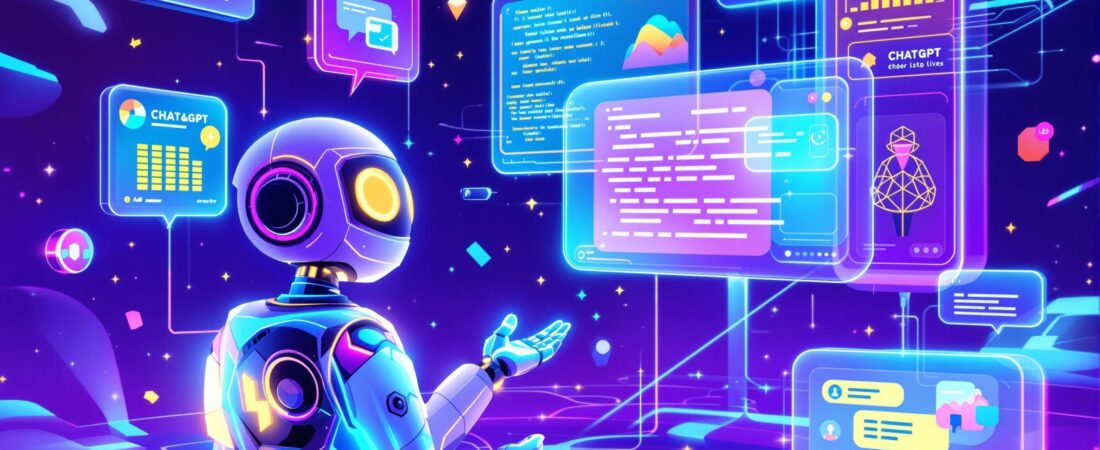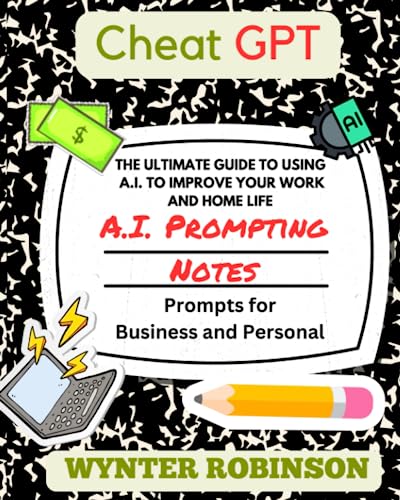Introduction
In recent months, ChatGPT has emerged as a highly discussed topic within both tech enthusiast circles and the broader public. As a product of OpenAI, this cutting-edge conversational AI model has garnered significant attention for its advanced capabilities in generating human-like text. With its innovative features and an ever-increasing array of applications, ChatGPT is reshaping numerous sectors, from customer service to content creation. As the demand for AI assistance continues to accelerate, understanding the potential and limitations of tools like ChatGPT is essential for both individuals and businesses alike.
This blog post aims to provide a balanced and honest review of ChatGPT, focusing on its strengths and weaknesses based on personal experiences with this AI powerhouse. It is important to explore what makes ChatGPT unique in the rapidly evolving landscape of artificial intelligence while acknowledging the complexities that users may encounter. AI technology, particularly in the realm of natural language processing, has come a long way, and ChatGPT exemplifies this advancement. However, as with any technology, it is crucial to evaluate its practical applications and limitations carefully.
By delving into the capabilities of ChatGPT, this review will attempt to answer key questions that potential users may have. How efficiently can it generate actionable responses? What are the scenarios where it excels, and where does it fall short? As AI continues to redefine workflows and enhance productivity, understanding tools like ChatGPT enables users to leverage its full potential. This introduction sets the stage for a crucial discussion on the transformative impact of conversational AI on our daily work and communication practices.
What is ChatGPT?
ChatGPT is a sophisticated AI language model developed by OpenAI, designed to understand and generate human-like text based on the input it receives. It operates on a vast dataset, utilizing machine learning techniques to engage in conversations, answer questions, and provide information across a variety of topics. This advanced model exemplifies the cutting-edge advancements in artificial intelligence, showcasing the potential to seamlessly interact with users in a naturalistic manner.
To better understand ChatGPT, one might consider it akin to a knowledgeable friend who is always available for a chat. Much like this friend, ChatGPT can provide insightful responses, offer guidance, and even entertain through engaging conversation. Its capabilities extend beyond casual dialogue; it can perform tasks ranging from writing assistance to answering complex inquiries, making it a versatile tool for enhancing productivity. This resemblance to a friendly conversational partner highlights its adaptability and immediate accessibility, reinforcing its role in reshaping how we work.
As a large language model, ChatGPT’s architecture is rooted in deep learning principles, allowing it to analyze context and generate coherent text responses. Its training encompasses a wide range of subjects, enabling it to contribute meaningfully to discussions in various domains. The more a user interacts with ChatGPT, the better it can understand preferences and tailor its engagements to meet individual needs. This dynamic interaction not only enhances user experience but also underscores the importance of AI in advancing communication methods in professional settings.
In harnessing the power of ChatGPT, users have access to an intelligent resource that can facilitate workflows, foster creativity, and streamline processes. As it continues to evolve, the potential applications for this AI powerhouse are vast, indicating a promising future not only for individual users but also for industries at large.
Key Capabilities of ChatGPT
ChatGPT has emerged as a powerful tool, revolutionizing various aspects of work through its diverse capabilities. One of its primary functions is writing assistance. Users can leverage ChatGPT to generate coherent and contextually relevant text across different styles and formats. Whether it’s crafting an email, drafting a report, or generating creative stories, this AI model can aid users by providing suggestions, structural guidance, and even complete drafts.
Another significant capability of ChatGPT is content creation. Businesses and individuals alike can utilize this tool to create high-quality articles, blog posts, and marketing materials. The model can produce engaging content tailored to specified audiences, incorporating relevant keywords and phrases for optimal reach. By automating initial drafts or producing outlines, ChatGPT saves valuable time for content creators, allowing them to focus on refining and finalizing their work.
ChatGPT also shines in grammar improvement. Users can input text they wish to refine, and the model can suggest corrections and stylistic enhancements, ensuring the final product is polished and error-free. This tool is particularly beneficial for non-native English speakers or anyone looking to elevate their writing skills. By providing immediate feedback, ChatGPT acts as a writing tutor, helping users learn and improve in real time.
In addition to writing and editing, ChatGPT offers programming support. Developers can seek assistance with coding tasks by querying the model for explanations of code snippets, debugging help, and implementation advice. This can streamline the coding process, making it less daunting for those grappling with complex programming concepts.
Lastly, ChatGPT serves as effective educational guidance, providing students with explanations, summaries, and answers to a myriad of questions. Its ability to distill complex ideas into simple, understandable terms makes it a versatile support tool in various educational contexts. In conclusion, the primary capabilities of ChatGPT enable users to enhance their workflows significantly and optimize productivity across multiple domains.
The Real-World Impact of ChatGPT
ChatGPT has emerged as a transformative tool across various sectors, fundamentally reshaping workflows and enhancing productivity. Its capabilities extend beyond mere conversation, positioning it as an innovative solution for both educational and professional environments. For students, ChatGPT serves as a supportive tutor, assisting with homework, clarifying complex concepts, and offering guidance on writing assignments. This AI-powered platform allows students to engage in interactive learning, where they can ask questions and receive tailored explanations, facilitating a deeper understanding of subjects.
In the business realm, ChatGPT has proven to be instrumental in streamlining task management. Professionals utilize this AI assistant for a multitude of purposes, ranging from drafting reports to generating creative content. For instance, marketing teams leverage ChatGPT to brainstorm ideas for campaigns or create engaging social media posts, ultimately saving valuable time that can be redirected towards strategic planning. Moreover, the AI’s ability to analyze data and summarize findings allows professionals to make well-informed decisions faster, thus significantly enhancing overall efficiency.
Entrepreneurs are also tapping into the potential of ChatGPT to accelerate their business endeavors. The tool can assist startups by offering market insights, competitor analysis, and even investor pitches, making it an invaluable resource for those seeking to navigate the challenges of entrepreneurship. By automating routine tasks, such as scheduling meetings or managing emails, ChatGPT frees up entrepreneurs to focus on growth-oriented activities.
Across these diverse applications, the overarching theme remains clear: ChatGPT is more than just an AI; it is a powerful ally in improving workflows, promoting productivity, and enabling users to concentrate on more strategic and creative pursuits. The real-world impact of ChatGPT is evident, as it fosters a more efficient working environment for students and professionals alike.
Limitations Worth Noting
While ChatGPT represents a significant advancement in artificial intelligence and natural language processing, it is essential to understand its limitations to utilize it effectively. One primary constraint is its knowledge cutoff date, which is set in October 2023. This means that any events, developments, or information that emerged after this date will not be reflected in its responses. Users relying on ChatGPT for the most up-to-date information risk encountering outdated or irrelevant results, highlighting the necessity of supplementary research, particularly in fast-evolving fields.
Moreover, ChatGPT does not possess the capability to access real-time information from the internet. It generates responses based on the data it was trained on up until its cutoff, which can hinder its ability to provide contextually relevant answers in situations where current data is crucial. This limitation underscores the fact that while ChatGPT can be a valuable tool for generating ideas or drafting content, users must exercise caution and validate information from credible sources to ensure accuracy.
Another notable limitation is the occasional inaccuracy in responses. Despite its impressive processing power, ChatGPT may produce information that is factually incorrect or misleading. It does not possess a comprehensive understanding of nuances or complex scenarios, which may lead to oversimplification of certain topics. Therefore, users are encouraged to apply critical thinking when interpreting the output generated by ChatGPT. This technology should be viewed as an assistant rather than a definitive oracle of information.
In understanding these limitations, users of ChatGPT can set realistic expectations and integrate their own judgment, making them more effective in utilizing AI-generated content while safeguarding against potential pitfalls.
Best Practices for Using ChatGPT
To maximize the potential of ChatGPT, it is essential to adopt specific best practices that enhance its usability in various applications. One of the foremost strategies involves crafting clear and detailed prompts. The quality of input directly influences the quality of output; therefore, it is advisable to provide context and specify the desired outcome. For instance, instead of a vague prompt like “Tell me about AI,” a more structured request such as “Explain the impact of AI on modern healthcare” will yield more targeted and relevant responses.
Another crucial aspect of utilizing ChatGPT effectively is the verification of the information provided. Despite the advanced capabilities of ChatGPT, it can sometimes generate inaccuracies or outdated data. Users are encouraged to cross-check the outputs with reliable sources, especially when dealing with critical or factual information. This practice not only fosters accuracy but also builds trust in the AI-generated content.
Refining the outputs is also a key component of utilizing ChatGPT for optimal results. Users can ask follow-up questions or request clarifications to further develop their information. Phrasing a question like “Can you elaborate on that?” or “What are some examples?” can help dig deeper into a subject. This iterative process can assist users in crafting comprehensive content that meets their specific needs.
Lastly, it is important to view ChatGPT as a collaborative tool rather than a standalone solution. While the AI can generate ideas and draft content, the human touch is crucial in finalizing the work. Users should leverage ChatGPT’s capabilities to brainstorm, outline, or draft initial versions while ensuring that their expertise and critical thinking enrich the final output. By implementing these strategies, one can significantly enhance their experience and results when using ChatGPT for diverse tasks.
Where ChatGPT Fits in the AI Landscape
ChatGPT stands as a significant player within the evolving landscape of artificial intelligence tools, characterized by its distinct features and performance metrics. Comparative analysis with other AI systems, such as Claude and Bard, reveals important insights into how ChatGPT distinguishes itself. While Claude tends to focus on collaborative tasks and Bard is designed for creative writing, ChatGPT excels in conversational abilities and responsiveness, making it a versatile solution for various user needs.
One of the defining aspects of ChatGPT is its user interface, which is tailored for ease of use. The platform allows users to engage in dialogues that mimic natural conversation, thereby enhancing user experience. This intuitive design contrasts with some competing tools, which may prioritize functionality over accessibility. By providing a seamless interaction model, ChatGPT encourages users to explore its capabilities more fully, leading to greater satisfaction and productivity.
Performance consistency is another area where ChatGPT exhibits a competitive advantage. Many users have reported positive experiences with the AI’s reliability in generating coherent and contextually relevant responses. This can be crucial in environments where precision and dependability are paramount. In contrast, AI alternatives may sometimes produce outputs that lack coherence or relevance, thereby hindering trust in their capabilities.
Moreover, ChatGPT’s continuous updates and dedication to improving its algorithms ensure that it remains at the forefront of AI innovations. The system regularly integrates user feedback, making iterative improvements that directly enhance its performance. Ultimately, ChatGPT’s strong user interface, consistent performance, and successful adaptation to user needs allow it to occupy a distinctive position within the competitive AI landscape, providing a comprehensive solution for a diverse range of applications.
Pro Tips for Maximizing ChatGPT’s Potential
To fully leverage the capabilities of ChatGPT, it is essential to engage with it strategically and consciously. One key approach is to treat ChatGPT as a knowledgeable collaborator rather than merely a tool. By positioning it as a partner, users can encourage more interactive and insightful exchanges. This mindset fosters a more enriching dialogue, allowing ChatGPT to provide better responses and ideas. When users frame their queries in a collaborative manner, they are likely to receive answers infused with greater relevance and depth.
Furthermore, providing context is crucial when interacting with ChatGPT. Clear and specific prompts can significantly enhance the quality of responses. Users should aim to include all necessary details and specify the type of information or format they desire. For instance, if seeking a detailed explanation or a bullet-point summary, stating those preferences upfront can lead to more satisfactory output. The more precise the input, the more accurate and tailored the responses from ChatGPT will be, reflecting a deeper understanding of the query.
Combining the strengths of ChatGPT with human creativity opens up avenues for innovative outcomes. While ChatGPT offers a wealth of information and perspective, human users can apply their unique insights, emotions, and experiences to further enrich the content generated. This fusion enhances creativity and ensures that the final product resonates more profoundly with the intended audience. Therefore, a synergistic approach is advisable—utilizing ChatGPT’s capabilities for brainstorming and structuring ideas while infusing that content with a human touch to resonate authentically.
Adopting these practices can lead to a more effective use of ChatGPT, transforming it into a powerful ally in both professional and creative endeavors.
The Bottom Line
In the rapidly evolving landscape of artificial intelligence, ChatGPT stands out as a significant innovation, transforming the ways in which individuals and organizations approach their work. Throughout this review, we have examined the capabilities and limitations of this powerful tool, underscoring its role in enhancing productivity and creativity. It is essential to acknowledge that, while ChatGPT is an impressive model, it does not seek to replace human intelligence. Rather, it serves as an adjunct to human skills, providing support in various tasks including content creation, problem-solving, and even brainstorming sessions.
The key takeaway from our exploration of ChatGPT is its ability to streamline workflow. For professionals looking to improve efficiency, this AI tool offers substantial advantages. By assisting in drafting communications, generating ideas, or even summarizing lengthy texts, ChatGPT enables users to focus on higher-level strategic thinking and creativity. This augmentation of human intellect is invaluable in today’s fast-paced work environments, where time management is crucial.
Moreover, ChatGPT is continuously evolving, with updates aimed at enhancing its understanding and interaction capabilities. This evolution makes it imperative for organizations and individual users to remain curious about its growing features and how they can be leveraged to meet specific needs. Embracing ChatGPT as part of your toolkit not only fosters an innovative work culture but also encourages a collaborative dynamic between technology and human thinkers.
In conclusion, while ChatGPT is not a substitute for the nuanced judgment and emotional intelligence that humans bring, it is undoubtedly a powerful ally. By integrating this AI model into your professional practices, you may discover new avenues for productivity and creative expression. Encourage exploration of ChatGPT to best understand how its functionalities can complement your work style.
Further Reading on AI Tools
As artificial intelligence continues to evolve, various innovative tools have surfaced, each possessing unique capabilities and features that cater to different professional needs. For those interested in expanding their understanding of AI technologies, we recommend exploring additional resources that delve into tools like Canva AI and Copy.ai. These platforms exemplify how AI can augment creativity and streamline workflows, further demonstrating the technology’s versatility across various industries.
Canva AI, for instance, offers users a robust design platform enhanced by machine learning algorithms. With features like automatic layout suggestions, AI-driven image enhancements, and personalized design recommendations, Canva AI enables users, whether professionals or novices, to create visually stunning graphics and presentations with ease. Its intuitive interface combined with powerful AI capabilities makes it a valuable asset for marketers, educators, and business owners alike. By visiting Canva’s official blog, users can access tutorials and insights that highlight the tool’s potential and practical applications in real-world scenarios.
On the other hand, Copy.ai is focused on enhancing writing productivity through AI-generated content. This platform assists users in generating high-quality copy for various purposes, including blog posts, social media updates, and marketing materials. By leveraging AI technology, Copy.ai enables writers to overcome creative blocks and significantly increase their output. The platform offers a range of templates and writing tools that facilitate the content creation process. Users who explore the Copy.ai blog can obtain tips on effective writing techniques, case studies, and updates on the latest AI developments, providing a deeper insight into the evolving landscape of AI-driven content creation.
For those keen on examining the broader implications of AI tools, engaging with these platforms and their associated resources paves the way for a comprehensive understanding of how AI is transforming workplaces and enhancing productivity. Embracing these advancements will undoubtedly position individuals and businesses to leverage AI effectively in their endeavors.





